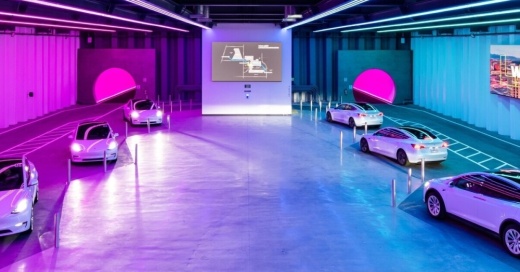The Alamo Regional Mobility Authority board on May 18 was briefed on a Pflugerville, Texas, firm’s proposal to build an underground tunnel from the San Antonio International Airport to downtown.
ARMA officials acknowledged public questions and concerns spurred by their recent decision to start preliminary talks with the Elon Musk-founded Boring Co. about the latter’s pitch to develop a nearly $300 million tunnel.
Board Chair Mike Lynd said the ARMA began a process in October 2019 to solicit ideas for developing a high-capacity transit project designed to reduce vehicular traffic in central San Antonio.
But Lynd said he wanted to make it clear that, contrary to opinions offered by some residents in recent weeks, no agreement or project is anywhere close to being finalized.
“We’ve taken no action regarding any project,” Lynd said.
Renee Green, Bexar County Public Works director and county engineer, gave the tunnel presentation to the ARMA board in the open part of the board’s May 18 meeting before members went into executive session.
Green said the ARMA’s original request for information/proposals resulted in the agency receiving proposals from five companies, including the Boring Co., which built one tunnel in central Las Vegas and has similar concepts in the works elsewhere.
The ARMA pared down the proposals list to two: one from Boring Co. and one from Bexar Automated Transport/SAK. The board in March authorized ARMA staff to negotiate with the Boring Co. to advance what the ARMA now calls the Alamo Loop Project, or a hyperloop.
According to Green, the 7.6-mile system would transport people along a route that would be roughly parallel to the US 281 segment from the airport to the central business district.
But Green added that no route could be settled until a feasibility study is performed alongside an examination of potential environmental risks.
Green said such studies are critical toward reducing or eliminating confusion that some people might have about the potential tunnel project.
“There’s been a lot of misinformation on potential environmental concerns,” she said.
Green said passengers using the system would arrive at designated stations along the tunnel route and board electric vehicles, such as Tesla cars that would take them straight to their destinations, such as the Pearl.
Green said stations would be one of three types depending on the station location. She also said exit shafts would be located at every half-mile along the tunnel for safety purposes.
According to the presentation, with 100 operating transportation vehicles, the tunnel could carry about 32,000 passengers daily on average.
Green said the Boring Co. estimates the average user cost between $10 and $12, with annual net revenue projected as much as $25 million.
The presentation shows total project cost estimates range from $241 million to $298 million and that it could take fewer than 36 months to build the entire tunnel, with the company’s boring machine possibly running 24 hours a day.
Green said the ARMA would conduct a ridership and revenue study based on the route study.
“These revenue projections, obviously, will require more study for reasonableness and accuracy. That’s what the revenue and ridership study will tell us,” Green said.
Green also said the Boring Co. has proposed offering a “turn-key lump sum construction price where they assume all the risks,” but that price was not provided. Green added that the project, if it were to go forward, would be self-funded with no taxpayer money.
According to Green, if the tunnel were to be realized, the new revenue stream would allow the ARMA to direct as much as $400 million toward envisioned, unfunded transportation projects across the San Antonio metropolitan area.
Green provided possible benefits from an airport-to-downtown tunnel, including shorter travel times, little to no wait for each trip, reduced vehicle emissions, system expandability and the ability to adapt the tunnel to autonomous vehicles.





